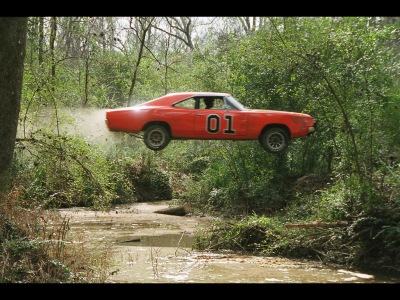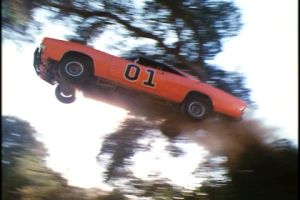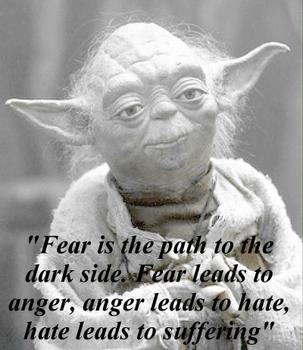Long time overdue update. My excuse is that I’ve been trying to live my life as a person who doesn’t maintain a blog about cancer. And so, sitting down to reflect on my trials and tribulations has become quite an effort for me. But I digress…
When last we left off, I was getting a couple of extra doses of SGN-35 (Adcetris) and waiting to see the results of an updated PET scan. How are the Duke Boys gonna get out of this one? (cue banjo music)

Will the General Lee land in the hospital? The infusion room? Or safely at home playing Playstation?
I had a clean PET in August. My PET in the beginning of October showed a couple of faint hotspots in my chest. My PET at the end of October showed the same couple of faint hotspots. The presence of any activity was enough for my doctors to postpone my allogeneic stem cell transplant and try to get me into complete remission.
My main tumor is inert. The activity looks like it is based in two lymph nodes in my chest. These lymph nodes are located near my right lung and somewhere near my spine. Hodgkin’s is already notoriously difficult to biopsy because of the mix of cells. And I’m definitely not going to let a surgeon crack me open to conduct a cancer easter-egg hunt in my chest. So we are moving ahead with the information we have.
For now, I’m on a drug called Everolimus (Affinitor or RAD001). It has been FDA approved for kidney and liver cancers as well as for those who have had transplants. It has shown promise in treating Hodgkin’s Lymphoma, but it is still in the trial phase. I’ve been taking it for over a month. The on/off pains I had in my chest went away. I don’t have any Hodgkin’s symptoms (itching, night sweats, cramps). And generally I feel really good. You wouldn’t even be able to tell that I had the big C by looking at me (unless I bitch you out for parking in a handicapped parking space without a permit…but that’s another story).
I do get fatigued in the middle of the day. So I nap a lot. And I developed some mouth sores last week which slowed me down for a couple of days. I use a rinse made up of water, baking soda, salt and hydrogen peroxide which seems to keep mouth problems in check. I highly recommend it for any cancer patient – but don’t tell the nurses that you are rinsing with hydrogen peroxide as they will freak out.
Also, Everolimus can cause serious problems with the lungs so the doctors keep a close eye on any cough or shortness of breath that might develop.
Everolimus also affects my platelet counts, which are already critically low after my auto transplant last year. A normal platelet count is between 150,000 – 400,000…I hover around 45,000. And while on Everolimus, it has dropped as low as 19,000 (which led me to get a transfusion). The doctors are keeping a close eye on it and I get blood tests every week.
Here’s where things get complicated. Or, to beat a bad analogy into the ground – here’s the part where Boss Hog has the banker locked in jail while Uncle Jessie needs his money to make a payment on the farm before Roscoe and Enos evict him. Or something like that.
Everyone agrees that an allogeneic stem cell transplant is the only procedure that has been proven to show consistent results in getting 10-30% of patients with relapsed Hodgkin’s into long term remission. And, with my brother being a 10/10 match, this is the procedure for me.
However, there are different schools of thought regarding when to have the transplant. For some, I should have the transplant as soon as possible, since we don’t want to give the cancer a chance to grow and I’ve already been through a lot of toxic treatments, chemo regimens, radiation and SGN-35. If the cancer spreads or grows, it could put me in a bad situation for my allo transplant. I’ll call this the “Act Now” plan.
On the flip side, there are definite drawbacks to having an allo transplant too soon. The patient should enter an allo transplant under the best possible circumstances – no active disease, some history of remission/disease control and not too soon after a failed auto. There are quite a few examples of failed allo transplants taking place after failed auto transplants. And it makes sense to be sure that the disease is under control before putting myself through all the difficulties of an allo transplant.
I have to consider that an allo transplant is rife with complications. The graft vs. host disease can get bad. The procedure itself is debilitating. The recovery period is difficult. The chance of getting pneumonia, virus or infection is quite high and can be catastrophic. The hospital food is going to suck.
For some, the allogeneic transplant is basically a last resort. Putting all my cards on the table. Going all-in. Playing my hand. Pis aller (as the French say).
And, to be honest, the vagueness of the hotspots in my chest followed by a clean PET scan in August makes me suspicious that the activity shown on the scans is active disease and not my lymph nodes reacting to the SGN. For one, I don’t have any Hodgkin’s symptoms. Also, the chest pain has gone away. And my main tumor is inert. Could I already be in remission? Possibly. But without a biopsy we have to move ahead with the information we have available – and that shows hotspots.
Jen Berry (aka Encyclopedia Berry, Girl Detective) has been doing a ton of research about my situation. She has been talking to other Hodgkin’s patients, researching clinical trials and considering 2nd opinions. Some new information has come to light.
1. I want to go in for my transplant under the best possible circumstances.
2. There is a lot of hope for treating Hodgkin’s Disease like a virus through the development of T-cells which attack the EBV virus present in some Hodgkin’s tumors. I’m not sure of the numbers and my grasp of the science is fuzzy – but Dr. Bollard and Dr. Heslop have made huge gains in early clinical trials at Baylor University. Unfortunately, my tumor is EBV negative so I do not qualify for Dr. Bollard’s current study. But they are also pursuing studies for EBV negative patients or patients who merely show EBV in the blood (not just the tumor). Consult ClinicalTrials.gov for more information. One day it may be possible that my body treats the Hodgkin’s like a virus and keeps the cancer under control on its own.
3. Among Hodgkin’s patients, there is a man…his name is whispered in the forums…he has attained almost mythical stature. They call him “Dr. O”. And, apparently, he is the guy to see if you’re a relapsed Hodgkin’s patient. We contacted Dr. O (also known as Dr. Owen O’Connor at Columbia) and he got back to us right away – a good sign. We are planning on traveling to NYC to see him in the next couple of months.
We are trying to make sure we are pursuing the best course of action for me to either beat this disease or find a path towards long-term disease control.
Most people are part of the 80% that get go into long-term remission after front-line ABVD treatment.
Some people have the perspective that Hodgkin’s Disease is something they can live with and maintain, like diabetes or HIV. They live their lives to the fullest extent they are able.
Every day, doctors and researchers are developing new plans of action, new drugs, new treatments to fight lymphomas and cancers. For many, it is a matter of hanging on until the magic bullet is found or a treatment works for them.
Which brings me back to the title of this blog: Heroes.
Some people still comment to me about my bravery, sense of humor or chutzpah through all of this. Which is kind and appreciated. I try to set a good example. I’m humble about it because I don’t feel special. I know I’ve been changed and affected by my experience, but I’d like to think that I’m still just me. Kind of a know-it-all. Kind of lazy. Kind of a nerd. Just a little more toxic inside than the usual person.
So who do I look up to? Who are my heroes?
First and foremost: my wife. If you’ve met her, if you’ve talked to her, if you’ve ever eaten her cooking, if you have only read her Facebook – then you know she is a special woman and I’m lucky to have her by my side.
Friends and family. Thanks for keeping me sane. For checking in. For the distractions and support. For making me feel normal when life is abnormal. For football Sundays.
My doctors and those that get paid to care for me. Dr. Pinter-Brown. Dr. Chen. Dr. Eredat. Dr. Loh. Grace Cherry. Suzanne Levanas. Donna Pall. The nurses (so many nurses). Even my medical insurance and disability insurance representatives have supported me over the past two years – shout out to Lynn Goodenough and Sheryl Quarnstrom! My team. I honestly believe that they do it because they care, and that makes a huge difference.
And here’s where the line comes full circle – All the other Hodgkin’s patients.
It sounds ridiculous for me to acknowledge the strength I get from other patients when I am so flippant about my own role as someone who sometimes inspires others. I think this is part of what they mean by the Cancer Community. All of us poor, pathetic, nauseous, gassy, sometimes-bald patients looking for a cure, looking for answers, looking for comfort. We have nothing in common except for drugs, disease, radiation, stem cell transplants and cancer. Yet…
Jen is more in touch the larger world of Hodgkin’s patients than I am. I just don’t have it in me to read the Facebook posts or follow all the blogs. To try to avoid the sad stories while looking for the positive ones. Who is getting treated where and by whom? What’s the next big thing? Who qualifies and who doesn’t? I find it difficult enough to keep track of my own disease, let alone everyone else’s.
But recently it seems that Jen has tapped into a new community – people who are living their lives with Mr. Hodgkin’s. He’s more of an inconvenient roommate than an unwanted visitor. These are people who keep on keeping on. Not as the head of some kind of foundation or as a spokesperson. Just…people. Who happen to be statistical anomalies. Who feel compelled – like I do sometimes – to share their experiences and information with the greater community in the hopes that what they’ve been through can help someone else down the road.
Karin and Becca and Chris and Ethan and Ben and the rest.
…
I just went back and read some Facebook posts and looked at some other Lymphoma blogs. It only reinforces my feelings that I’m not special. That none of us are special. We are just people. Living lives with hopes, fears, dreams, compromises, gripes, laughter and tears.
Maybe we live life a little more raw then healthy people. I don’t know.
Let’s just say, this episode is “To be continued…”







